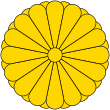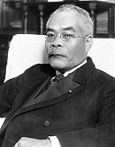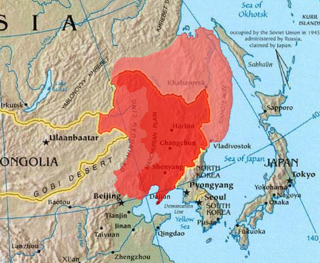
The politics of Japan are conducted in a framework of a multi-party bicameral parliamentary representative democratic constitutional monarchy whereby the Emperor is the ceremonial head of state and the Prime Minister is the head of government and the head of the Cabinet, which directs the executive branch.
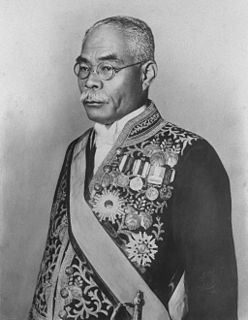
Hamaguchi Osachi was a Japanese politician, cabinet minister and Prime Minister of Japan from 2 July 1929 to 14 April 1931. Nicknamed the "Lion Prime Minister" due to his dignified demeanor and mane-like hair, Hamaguchi served as leading member of the liberal Rikken Minseitō during the "Taishō Democracy" of interwar Japan; he survived an assassination attempt by a right-wing fanatic in 1930, but died about eight months later.
Political parties appeared in Japan after the Meiji Restoration, and gradually increased in importance after the promulgation of the Meiji Constitution and the creation of the Diet of Japan. During the Taishō period, parliamentary democracy based on party politics temporarily succeeded in Japan, but in the 1930s the political parties were eclipsed by the military, and were dissolved in the 1940s during World War II
General elections were held in Japan on 20 February 1932. They were the last elections before the May 15 Incident, which marked the temporary end of party politics in Japan. Rikken Seiyūkai won 301 of the 466 seats in the House of Representatives.

Rikken Minseitō was one of the main political parties in pre-war Empire of Japan. It was commonly known as the 'Minseitō'.
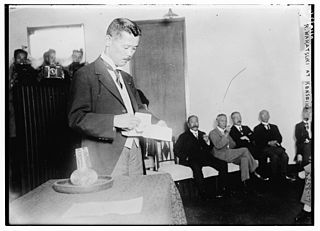
The Kenseikai was a short-lived political party in the pre-war Empire of Japan.

General elections were held in Japan on 10 May 1924. No party won a majority of seats, resulting in Kenseikai, Rikken Seiyūkai and the Kakushin Club forming the country's first coalition government led by Katō Takaaki.

Adachi Kenzō was a statesman, politician and cabinet minister in Taishō and early Shōwa period Japan.
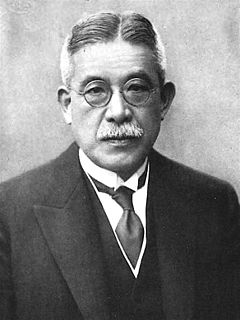
Takejirō Tokonami was a Japanese statesman, politician and cabinet minister in Taishō and early Shōwa period Japan. Tokonami was involved in several government agencies throughout his career, and served in the leadership of different political parties. He was regarded by his contemporaries as a rather opportunistic politician eager for an opportunity to become prime minister.
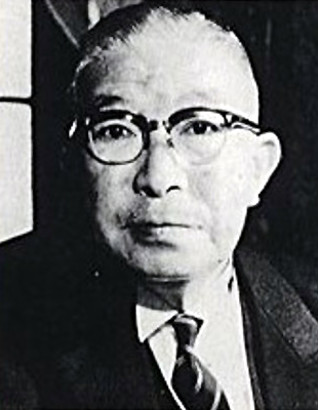
General elections were held in Japan on 10 April 1946, the first after World War II. Voters had one, two or three votes, depending on how many MPs were elected from their constituency. The result was a victory for the Liberal Party, which won 148 of the 464 seats. Voter turnout was 72.1 percent.

General elections were held in Japan on 31 March 1937. Rikken Minseitō emerged as the largest in Parliament, with 179 of the 466 seats. The election was a major victory for the Shakai Taishūtō, which became the third-largest party in the Diet. It was the first socialist party to do so in Japanese history. In contrast, the mildly pro-military Rikken Minseitō lost several seats and fascist groups such as Tōhōkai remained minor forces in the House. A month after the election, the Emperor replaced Hayashi with Fumimaro Konoe. Voter turnout was 73.3%.
General elections were held in Japan on 20 February 1936. Rikken Minseitō emerged as the largest party in the House of Representatives, winning 205 of the 466 seats.

General elections were held in Japan on 10 May 1920. The result was a victory for the Rikken Seiyūkai party led by Hara Takashi, which won 278 of the 464 seats.

General elections were held in Japan on 20 April 1917. The Rikken Seiyūkai party led by Hara Takashi emerged as the largest party in the House of Representatives, winning 165 of the 381 seats.
Events from the year 1928 in Japan. It corresponds to Shōwa 3 (昭和3年) in the Japanese calendar.
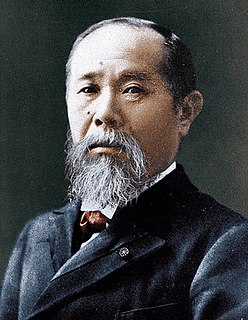
General elections were held in Japan on 10 August 1902. The result was a victory for the Rikken Seiyūkai party, which won 191 of the 376 seats.
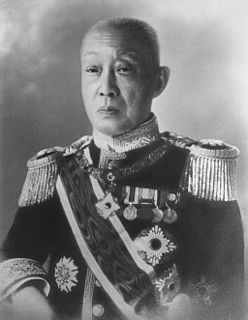
General elections were held in Japan on 1 March 1904. The Rikken Seiyūkai party remained the largest in the House of Representatives, winning 133 of the 379 seats.

General elections were held in Japan on 15 May 1912. The result was a victory for the Rikken Seiyūkai party, which won 209 of the 381 seats.
The Seiyūhontō was a political party in Japan. It was active from 1924 until 1927.
